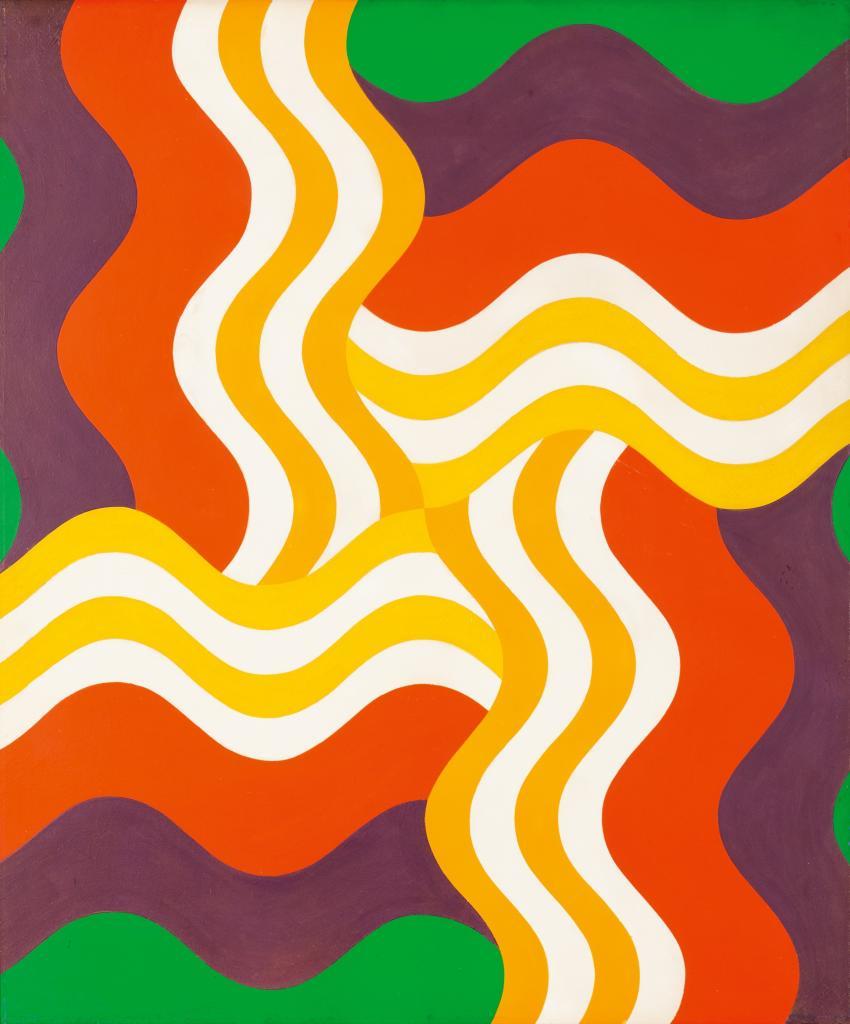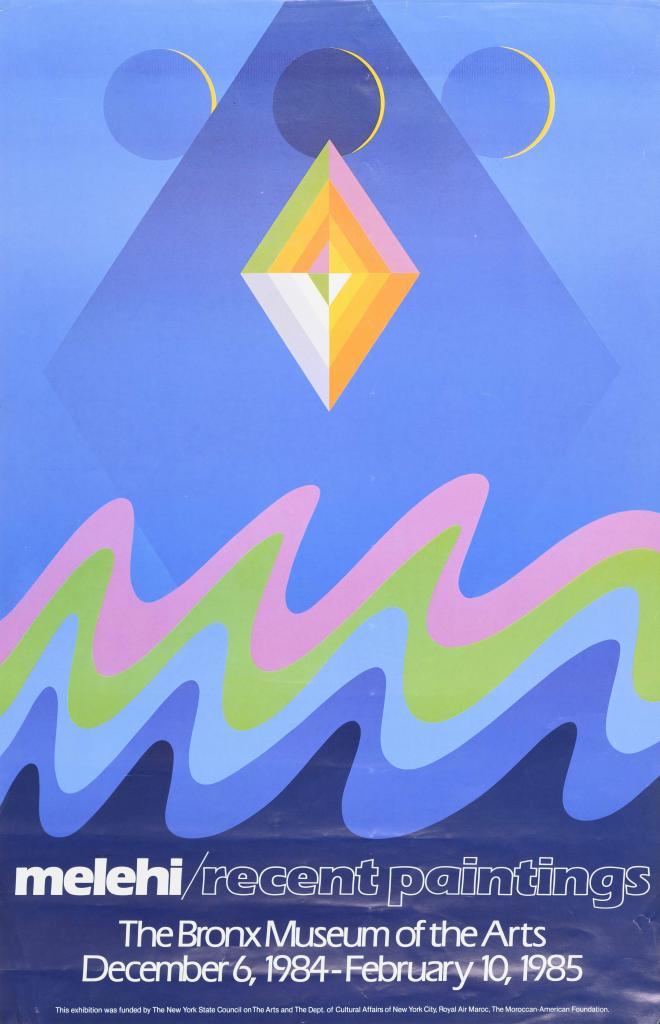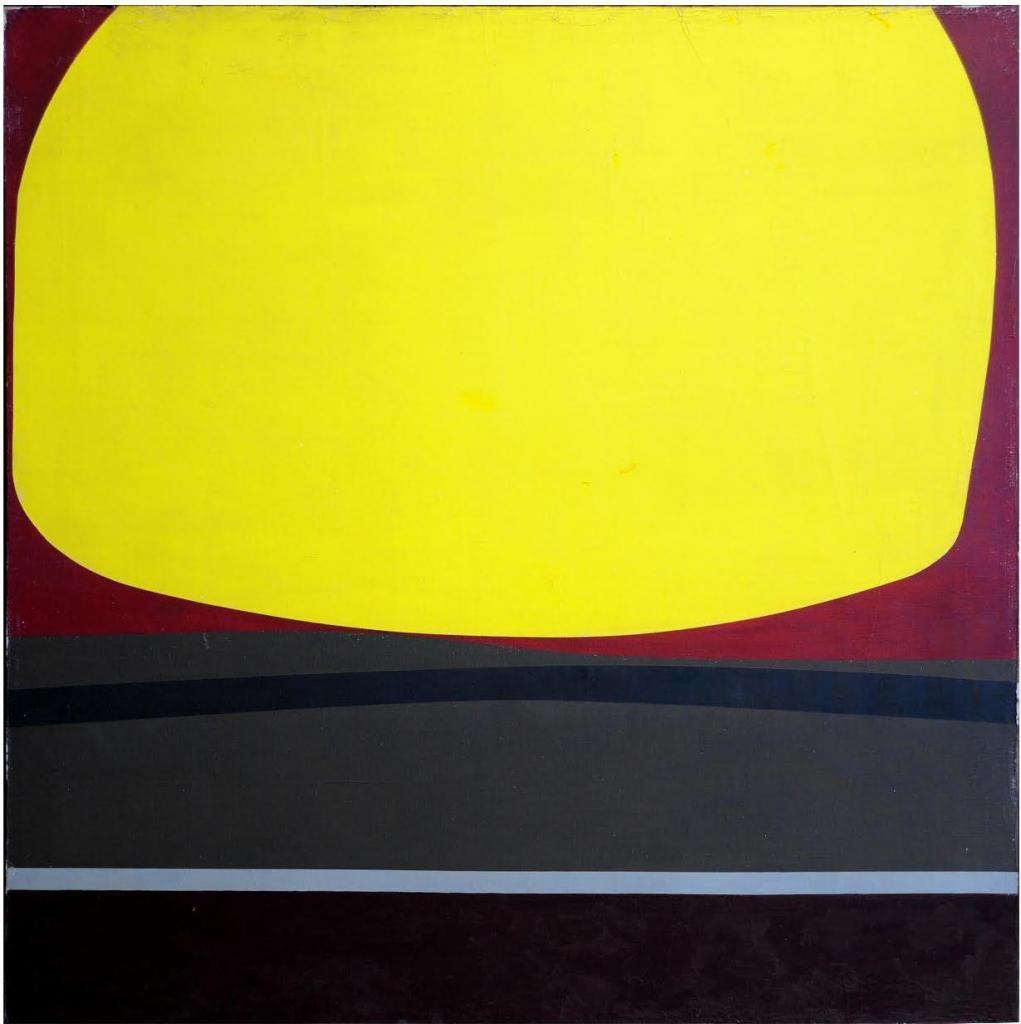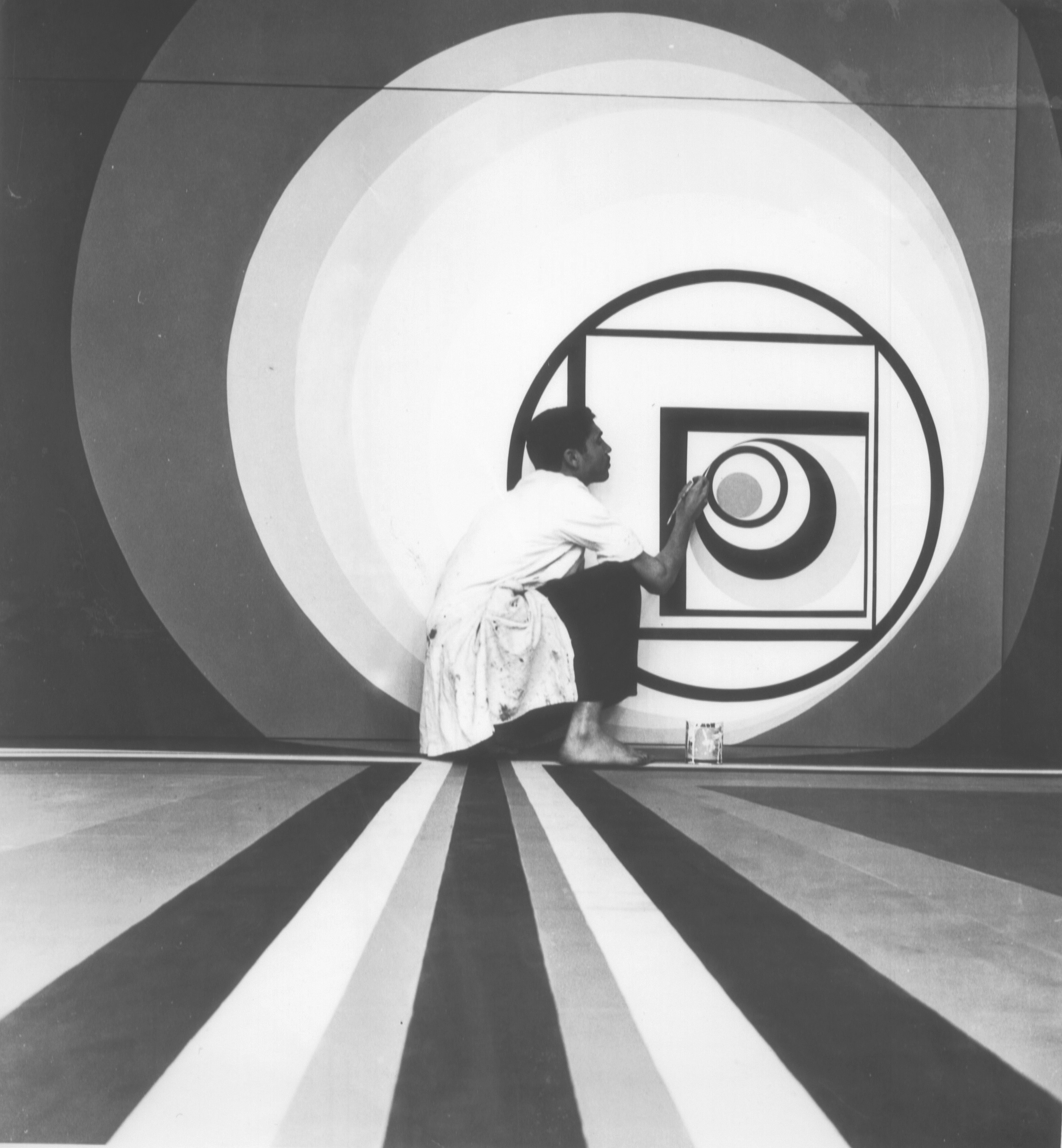New Waves at the MACAAL
21/09/2019 - 05/01/2019Mohamed Melehi and the Casablanca Art School Archives

New Waves: Mohamed Melehi and the Casablanca Art School Archives offers a chronological journey that retraces the period in the artist’s career from the 1950’s to the 1980’s through the exploration of previously unseen works and archives. Curated by Morad Montazami for Zamân Books & Curating, developed with The Mosaic Rooms, London, the exhibition will take place from 21 September 2019 to 5 January 2020 at MACAAL.
1957-1964. From Rome to New York City: Primary structures and soft edge painting
The introduction to the exhibition takes us to Rome during the 1950s, where Melehi is one of the first artists from the African continent to show his work at avant-garde galleries such as Galleria Trastevere. The first exchanges and trips to New York, where he takes part in MoMA’s 1963 exhibition, Hard Edge and Geometric Painting, represent another new dimension for Melehi.
1964-1978. From New York city to Casablanca: Thousands of waves in hyperspace
The return to Casablanca marks the beginning of a memorable adventure in the studios of Casablanca’s École des Beaux-Arts. Here, alongside Farid Belkahia, Mohammed Chabâa, Bert Flint and Toni Maraini, Melehi led one of the most significant movements in the history of post-colonial art. This section of the exhibition also focuses upon his practice as a designer-activist and the 1969 manifesto-exhibition in Jamaa el Fna square, as well as studio work and actions undertaken at the École des Beaux-Arts.
The 1980s. Reframing the wave: between Afro-berberism and post-colonial architecture
During the 1980s, Melehi developed a dynamic synthesis of all elements of his practice: he returned to African and Berber sources (notably in the painted ceilings of rural mosques), as the Casablanca group always encouraged, but also from his architectural experience in the 1970s (with the Faraoui and De Mazières firm), as well as his muralist practice, culminating in the legendary Asilah Arts Festival, which he co- founded in 1978.

Redesigned for the spaces of MACAAL and in consideration of its vocation, the exhibition path presents a majority of works that have rarely or never before been seen by the public, thus creating a new perspective upon the influence of Melehi and the École de Casa, both in and outside Morocco. An unprecedented documentary device allows spectators to plunge into this golden age of the Moroccan, Arab, and African avant-garde. To this end, original prints by Melehi in his role of documentary-photographer are on display. Specially-designed for the New Waves exhibition’s Moroccan stop is the “Afro-Berber Museum” room: here are objects culled from the collections of the Musée Tiskiwin-Bert Flint in Marrakech as well as exceptional artworks by Malika Agueznay, Farid Belkahia, Mohammed Chabâa, and Hossein Miloudi.
To further deepen understanding through historic documentation, the exhibition will conclude with a slideshow of photographic images from the Asilah Moussem (the intersection of Mediterranean and Arab-African trajectories as imagined by Melehi) as well as a screening of the rediscovered documentary film on Melehi, produced by the Bronx Museum of the Arts (NY) in 1984. Another outstanding documentary about the artist to be discovered here, the one by Faten Safieddine, La Vague à l’âme (1995), co-directed with Mohammed Boualem for Moroccan TV (2M).

Offering a richly-documented interpretation of Melehi’s work, highlighted by an original scenography, the exhibition shows us a lesser-known aspect of work that might be considered “globalised” before its time. Research led by Zamân Books & Curating – the platform specialising in Arab, African and Asian modernities – consists of retracing the steps of a path that is more complex than it might seem – extending beyond the binary schema of East and West. Paced via scenography that draws inspiration from Melehi’s colours, lines, and waves, New Waves proposes an appreciation of the multiple facets of this cosmopolitan artist: from his geometric experiments to the cultural revolution put in motion at the École de Casa and his key role in the development of art education in Morocco, as well as his significant work as photographer, editor, designer, graphic artist and muralist, which has largely contributed to shaping the aesthetics of post-colonial and pan-Arab artistic networks.
A programme of multidisciplinary events will be structured throughout the four months of the exhibition (conferences, round tables, publication launches, pedagogical workshops, etc.). Follow activities on: www.macaal.org




